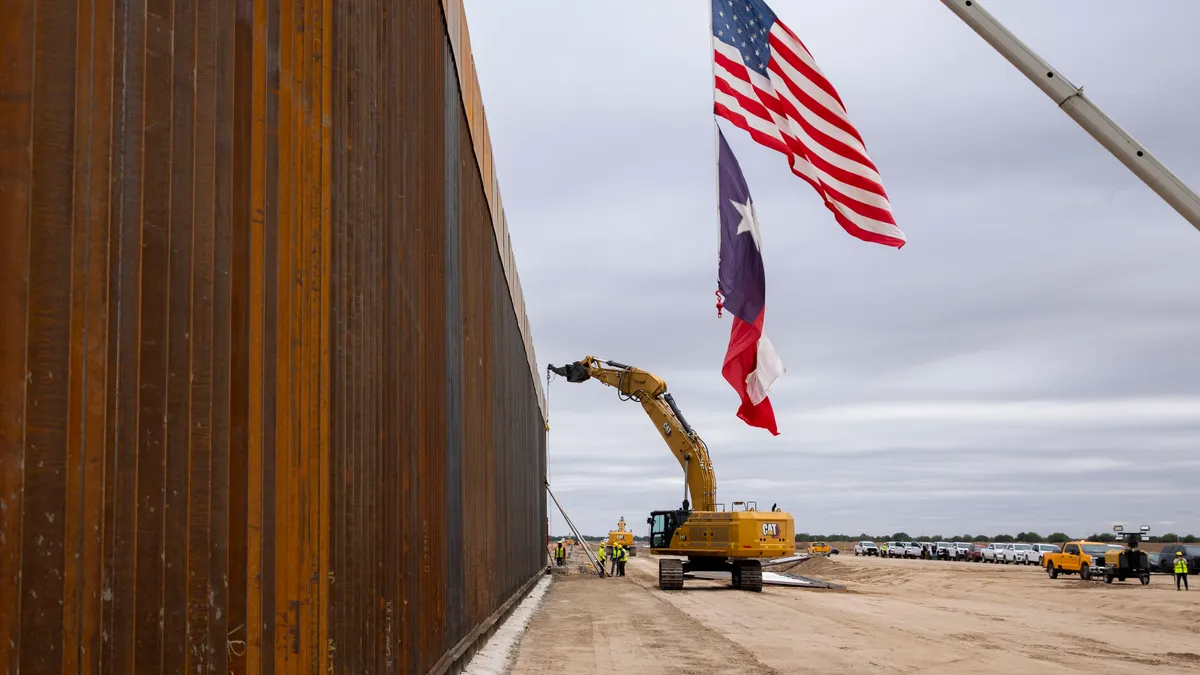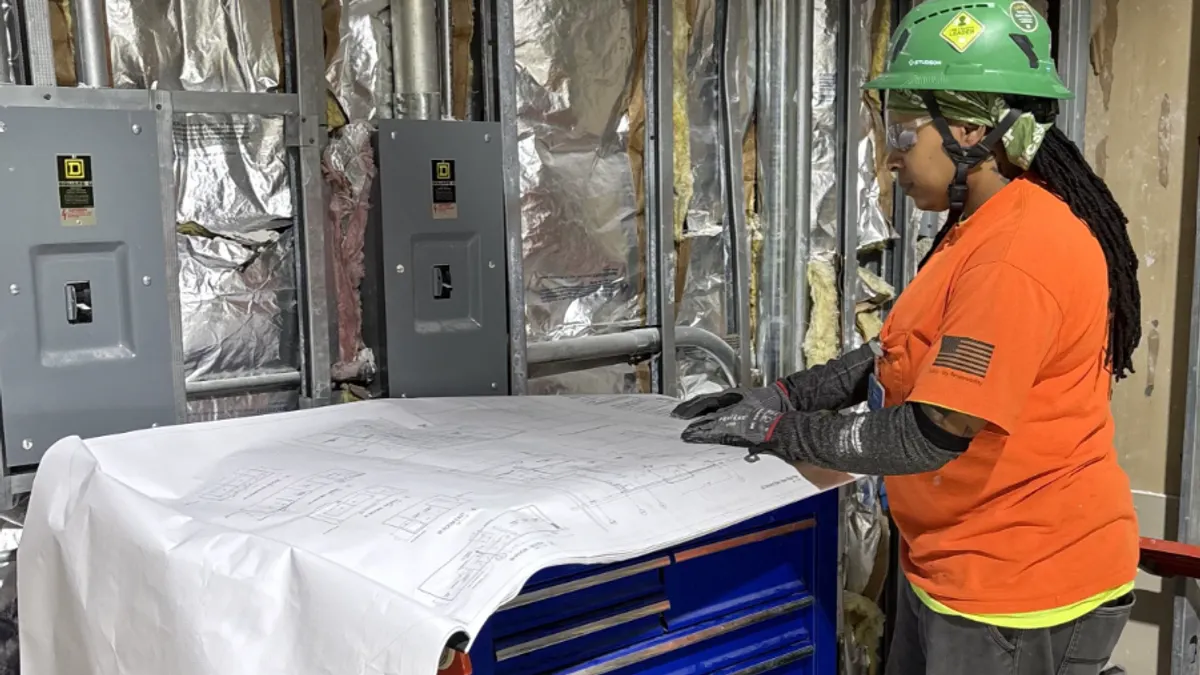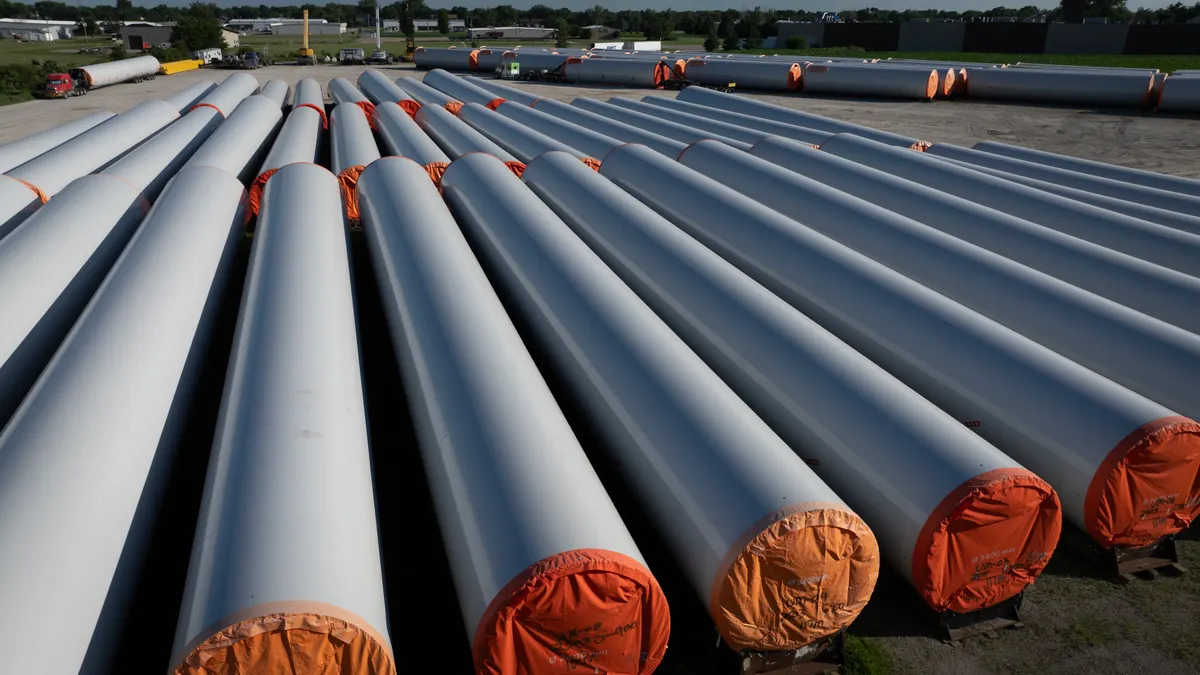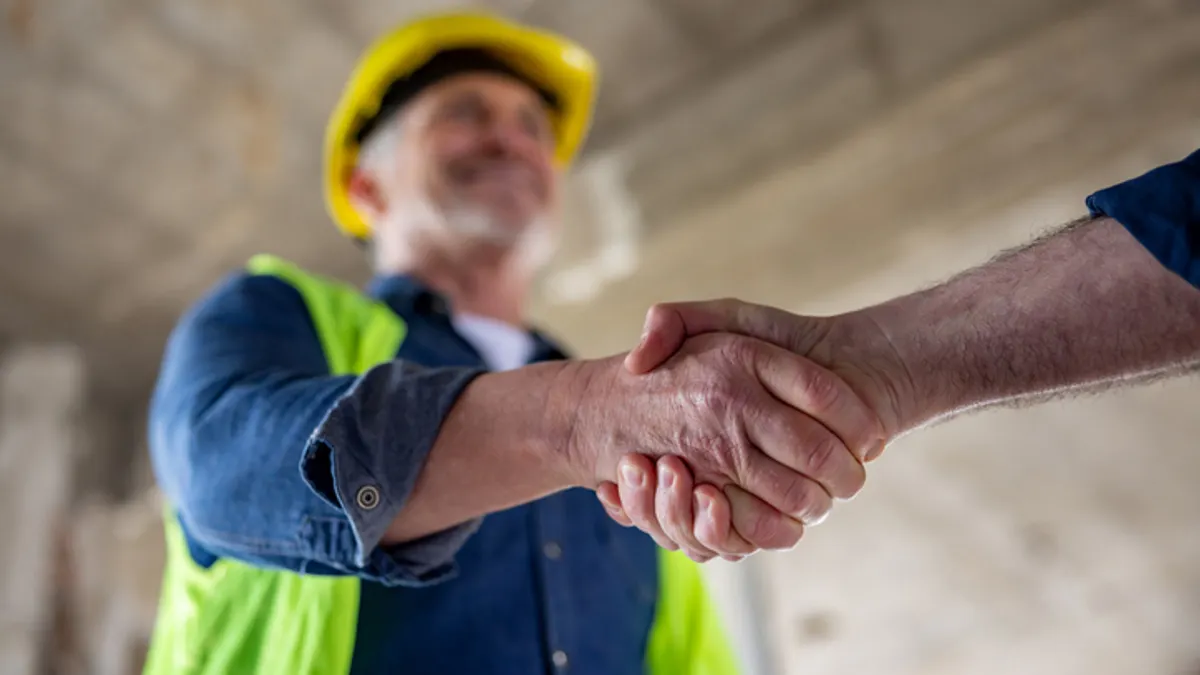In the early weeks of the U.S. coronavirus pandemic, safety managers at EV Construction fielded questions from employees and subcontractors who were concerned about the safety of working during the growing outbreak.
They wanted to know how company leaders planned to keep everyone healthy.
The Holland, Michigan-based company met their concerns head on and quickly developed a set of protocols to ensure that jobsites were safe and clean. They sent out a steady stream of information via newsletters, emails, companywide webinars, Zoom calls and video blogs from CEO Mike Novakoski.
“By keeping people involved, we ensure they don’t have to wonder what’s going on — they know,” Novakoski told Construction Dive.
While EV had some workers opt to stay home in the early days of the crisis, the company’s focus on safety and transparency has kept workers coming back to projects, about 75% of which have been deemed essential under Michigan’s stay-at-home order because they are healthcare-related.
At El Paso, Texas-based Jordan Foster Construction, safety managers have focused on positive messages and interactions, bringing breakfast and lunch to sites during Toolbox Talks and partnering with a pastor who visits projects weekly to forge relationships and check in with workers.
Safety leaders visit projects daily to meet with employees and make sure they have what they need to be successful, according to Executive Vice President of Risk Management Tricia Kagerer.
“We cannot change the fact that COVID-19 is here in the United States and in our communities,” said Kagerer. "We can change our behavior at work and home and take the steps to stay healthy.”
Avoiding absenteeism
Around the country, construction workers are failing to show up for work because they are fearful they will pick up the virus and bring it home to elderly or immunocompromised family members. A recent Construction Dive survey found that dealing with anxious employees is contractors’ biggest challenge of the crisis so far, with 78% of respondents saying it’s one of the top ways that the crisis has affected their business.
Keeping employees engaged and reassured is paramount to keeping sites open, according to New York attorney David Perecman, founder and lead trial attorney at The Perecman Firm. A proactive approach will help ward off the high rates of absenteeism that many contractors are currently facing.
In order to keep sites running smoothly, contractors must ensure that employees’ anxieties about jobsite cleanliness and social distancing are addressed, Perecman told Construction Dive. “Managers need to make provisions and provide rules that recognize those fears,” he said.
These steps not only keep employees coming back to work but can also help reduce an employer’s liability.
“They will need to be able to say they are prepared with future needs for PPE,” he said. “They need to be able to show that they were, at a bare minimum, cognizant of the future need and took steps to address it.”
Signs of stress
Despite employers’ best efforts, some workers still struggle with high levels of anxiety during this unprecedented time. Managers need to recognize signs of stress among team members such as excessive worry, anger, loss of concentration and difficulty sleeping, Kagerer said.
“A pandemic crisis is not normal; none of us has ever experienced anything like this in our lifetime,” said Kagerer. “We need to tell ourselves that it is OK not to feel OK. It is completely normal."
Unchecked stress can lead to many issues that impact workforce safety, she added.
“Constant worry about exposure to COVID-19, family pressures and the 24-hour news cycle are distractions that can lead to injury,” she said. “Mental health issues can also lead to addiction issues that create even more safety risks on jobsites.”
Now more than ever, construction operations teams must be looking out for their employees to identify signs of stress and provide resources to reduce the impact to their employees, Kagerer said.
“Providing the workforce with guidance and support that focuses on providing real time updated information about how employees can work safely and giving them resources if they need someone to talk to is key to preventing injuries,” she said.






















